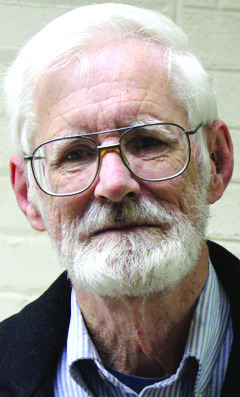For Your Consideration
Mike Lowry
Some call Jan. 6 a riot and others an insurrection. The New Webster’s Collegiate Dictionary defines an insurrection “as act or instance of revolting against civil authority or an established government.”
Riot is defined by the same dictionary as “public violence, tumult, or disorder; or tumultuous disturbance of the public peace by three or more persons, assembled together and acting with a common intent.”
When is a riot and when is an insurrection?
After the death of George Floyd, peaceful demonstrations were held across the country but not all were peaceful. In D.C., several protests turned very violent, especially one at the home of the executive branch, the White House. Over 65 Secret Service agents were injured and several were hospitalized, along with several other federal and D.C. law enforcement officers. (Civil law enforcement and executive branch of government were threatened.)
One official said he was convinced that if the White House was breached the building would be destroyed and a lot of people killed, including possibly the president and his f amily. W hen t he r ioters ( or insurrectionists) were forced away from the White House, they set fire to a historic church near the White House.
A total of 18 people were arrested that night. No FBI man hunt to identify those involved, who attacked law enforcement officers, set fires, and damaged the security facilities and fence. Of the 18 arrested, charges were dropped against 17 and only one actually faced charges.
When the U.S. Supreme Court reversed the Roe v Wade decision that had legalized abortion in the first trimester, the court ruled the law unconstitutional as abortion is not covered in the constitution. The court ruled it was not the job of nine Supreme Court judges to decide and the decision was for the people in their respective states to decide.
Peaceful legal protests and not so peaceful or legal protests followed. Illegal protests outside the Supreme Court building included a U.S. senator at that protest calling justices by name with a threat that they “would reap the whirlwind” for their decision.
No arrests followed these illegal demonstrations or illegal protests in the neighborhoods and at the homes of Supreme Court justices. Attorney General Garland only acted when a man was stopped who planned to kill Justice Kavanaugh and his wife and two young daughters. Instead of making arrests and stopping the illegal protests, Garland ordered U.S. marshals to protect the homes of the justices only. (Civil authorities and judicial branch were threatened.)
In the days leading up to the January 6th rally at the Washington Monument, President Trump called for the National Guard to be made available to D.C. officials and government buildings, including the Capitol. The D.C. mayor did request 500 of the available National Guard troops to be used but unarmed and to manage vehicle traffic.
Recently released transcripts of Deputy Chief of Staff Anthony Ornato said President Trump pushed to have National Guard on hand for security, including at the Capitol. This claim was backed up by National Security Adviser Lt. General Keith Kellogg, who testified he was aware of the request by President Trump for National Guard to guard federal buildings, particularly the Capitol.
Why weren’t the requested National Guard forces used? It was claimed early on, that they were not offered or requested - clearly not the case as recent documents show. The reason they may not have been used was because earlier Trump rallies ended without any real problem or incidents and officials assumed the January 6 rally would be like previous D.C. Trump events.
While President Trump was addressing the rally at the Washington Monument over a mile from the Capitol, others who had not even been at the rally turned violent.
Trump, unaware of the situation at the Capitol, concluded his remarks by saying, “I know that everyone here will soon be marching over to the Capitol building to peacefully and patriotically make your voice be heard.”
By the time, people at the rally got to the Capitol, violent and illegal protestors on one side were battling with Capitol Police. On the other side of the building, many rally attendees did not even know the violent demonstration was taking place on the other side.
Only one shot has been confirmed to have been fired on January 6th in or outside the Capitol. This was the shooting by a Capitol policeman of Ashli Babbitt. Newly released tapes and films challenge earlier findings that other shots were fired and also what actually transpired regarding this shooting.
Four Capitol Police officers were listed early on as having died from the violence on January 6. Sadly, one of the four had a heart attack days after January 6. Strangely, three other Capitol Police committed suicide for unknown or personal reasons after January 6.
Most damage to the Capitol was to exterior of the building and the rioters seemed to have stopped violence once inside the Capitol and cases of vandalism inside were limited to a few of the demonstrators and a few cases of theft. All legislators had been safely removed from the building. Clearly, they were acting against civil authorities as in an insurrection (but so did the Supreme Court protestors and White House protestors). Damage to the Capitol building and grounds was put at about $1.5 million.
By the same count, rioters in Minneapolis, Portland and Seattle went after civil and local government authorities, particularly police, which by definition would qualify them as insurrectionists.

.jpg)


